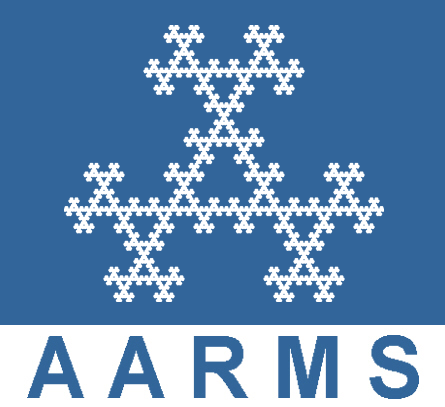2015 CMS Summer Meeting
University of Prince Edward Island, June 5 - 8, 2015
Org: Roberto Castelli (VU Amsterdam) and Holger Teismann (Acadia)
[PDF]
- ROBERTO CASTELLI, VU University Amsterdam
Parameterization of invariant manifolds for periodic orbits of vector fields [PDF]
-
Invariant sets and connecting orbits provide several information about the long term behaviour of nonlinear system.
If the invariant sets are hyperbolic, the connecting orbits may be found in the intersection of stable and unstable manifolds. In this talk we consider periodic orbits as invariant sets and we present an efficient numerical method for computing Fourier-Taylor expansion of invariant stable/unstable manifolds.
A fundamental ingredient in our construction is the Floquet theory. Indeed by continuously exploiting the Floquet normal form, the computation of the Fourier-Taylor coefficients results in solving algebraic equations with constant coefficients. The technique does not require any rigorous integration and permits fast computation of the parameterisation up to any desired order also for high dimensional manifolds. Moreover the method is well suited for a subsequent rigorous validation of the computed parametrisation.
Joint work with Jean-Philippe Lessard and Jason D. Mireles James.
- JACEK CYRANKA, University of Warsaw
A construction of two different solutions to an elliptic system [PDF]
-
Joint work with P.B. Mucha from University of Warsaw. We construct two different solutions to an elliptic system
$$
u \cdot \nabla u + (-\Delta)^m u = \lambda F
$$
defined on the two dimensional torus. Here $u=(u^1,u^2)$ is sought as a vector function.
The operator $(-\Delta)^m$ is elliptic homogenous of order $2m$.
It can be viewed as an elliptic regularization of the stationary Burgers 2D system.
A motivation to consider the above system comes from an examination of unusual propetries of the linear operator
$$
\lambda \sin y \partial_x w + (-\Delta)^{m} w.
$$
Roughly speaking the term with $\lambda$ effects in a special stabilization of the norms of the operator.
We shall underline that the special features of this operator were found firstly via numerical analysis.
Our proof is valid for a particular force $F$ and for $\lambda > \lambda_0$, $m> m_0$ sufficiently large.
The main steps of the proof concern finite dimension approximation of the system and concentrate on
analysis of features of large matrices, which resembles standard numerical analysis.
Our analytical results are illustrated by numerical simulations. Experiments are agreed with the conjecture :
for small $m$, in particular for $m=1$ -- for the classical Burgers equation with diffusion,
the system does not admit solutions for large $\lambda$.
Jacek Cyranka, Piotr Bogusław Mucha, \emph{A construction of two different solutions to an elliptic system}, arXiv:1502.03363.
- ANDRÉA DESCHÊNES, Université Laval
Stationary coexistence of hexagons and rolls via rigorous computations [PDF]
-
Over the past few decades, the spontaneous formation of patterns such as spatially periodic rolls, hexagonal cell structures, and spiral waves in spatially extended systems has attracted much attention. In the context of the modified Swift-Hohenberg PDE, some of these interesting interfaces can be modelled as stationary fronts between rolls and hexagonal patterns. Via the appropriate change of coordinates introduced in [Doelman, Sandstede, Scheel and Schneider. European J. of Appl. Math. 14 (1), 2003], it is known that computing the stationary fronts reduces to computing heteroclinic orbits between equilibria of a given system of second order ODEs. In this talk, we introduce the computational method that has been used to prove existence of some of these connecting orbits, hence leading to rigorous statements about co-existence of different types of non trivial patterns for the original PDE. This rigorous method combines Chebyshev series, the parameterization method of invariant manifold, fixed point theory and interval arithmetics. This is a joint work with J.B. van den Berg, J.-P. Lessard and J.D. Mireles James.
- MIOARA JOLDES, LAAS-CNRS, Toulouse, France
A Fast and Accurate Power Series Expansion Method to Compute the Probability of Collision for Short-term Space Encounters [PDF]
-
We present a new method for computing the probability of collision between two spherical space objects involved in a short-term encounter under Gaussian-distributed uncertainty. In this model of conjunction, classical assumptions reduce the probability of collision to the integral of a two-dimensional Gaussian probability density function over a disk. We derive an analytic expression for the integral, in the form of a product between an exponential term and a convergent power series
with positive coefficients. For this we use Laplace transform and algorithmic properties of D-finite functions (which are solutions of linear differential equations with polynomial coefficients). Moreover, rigorous analytic bounds on the truncation errors are also derived. This results in a reliable, accurate and efficient algorithm for the risk evaluation. This is a joint work with R. Serra, D. Arzelier, J.-B. Lasserre, A.Rondepierre and B. Salvy.
- TOMASZ KACZYNSKI, Université de Sherbrooke
Towards a formal tie between combinatorial and classical vector field dynamics [PDF]
-
The Forman’s discrete Morse theory is an analogy of the classical Morse theory with, so far, only informal ties. Our goal is to establish a formal tie on the level of induced dynamics. Following the Forman’s 1998 paper on “Combinatorial vector fields and dynamical systems”, we start with a possibly non-gradient combinatorial vector field. We construct a flow-like upper semi-continuous acyclic-valued mapping whose dynamics is equivalent to the dynamics of the Forman’s combinatorial vector field, in the sense that isolated invariant sets and index pairs are in one-to-one correspondence.
This is a joint work with M. Mrozek and Th. Wanner.
- CHRISTIAN REINHARDT, VU University Amsterdam
Rigorous numerics for nonlinear ODEs using Chebyshev series [PDF]
-
In this talk we present a rigorous numerical method to solve initial and boundary value problems for nonlinear ODEs based on Chebyshev series. Our method results in a numerical approximate solution of the ODE together with mathematically rigorous error bounds. The main idea of our proposed approach is to first expand the solution of a given differential equation using its classical Chebyshev series, plug the expansion in the equation and obtain an equivalent infinite dimensional problem of the form $f(x) = 0$ to solve in a Banach space of rapidly decaying Chebyshev coefficients. Via a fixed point argument, we obtain the existence of a genuine solution of $f(x) = 0$ nearby a numerical approximate zero of a finite dimensional projection of f. The Newton-Kantorovich type argument is carried out by using the radii polynomials, which provide an efficient way of constructing a set on which the contraction mapping theorem is applicable. We illustrate the method with examples.







